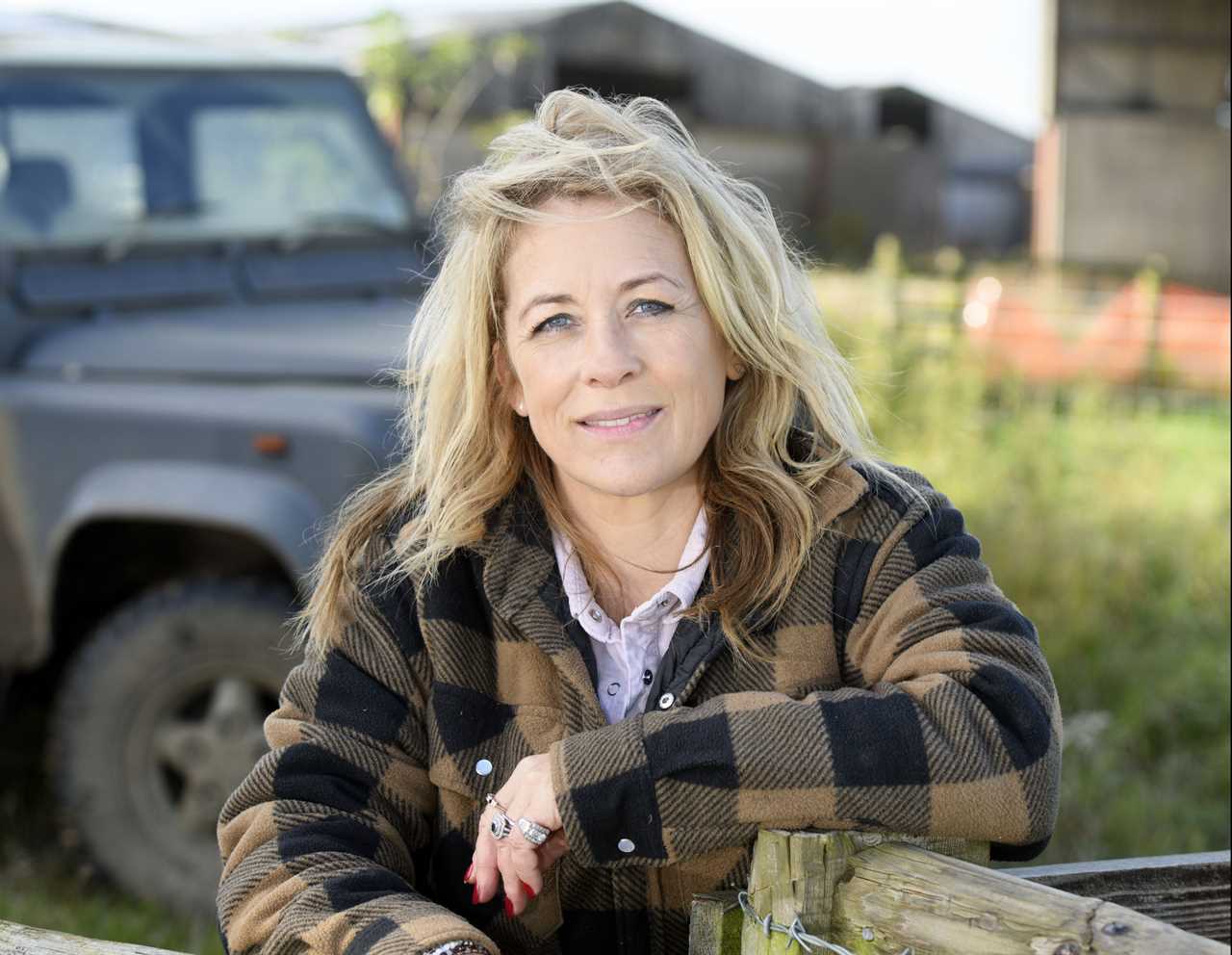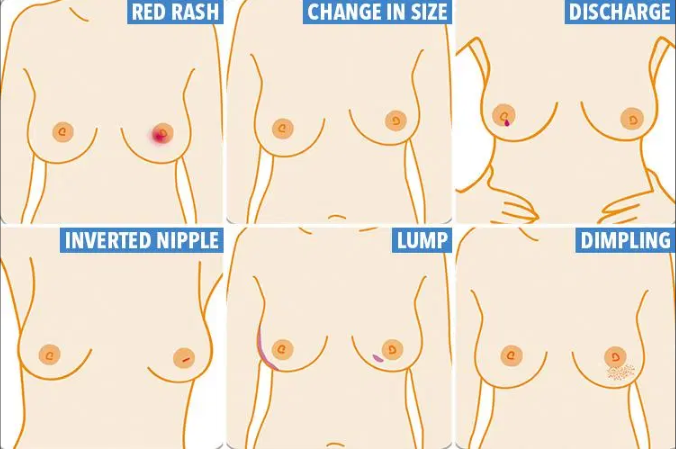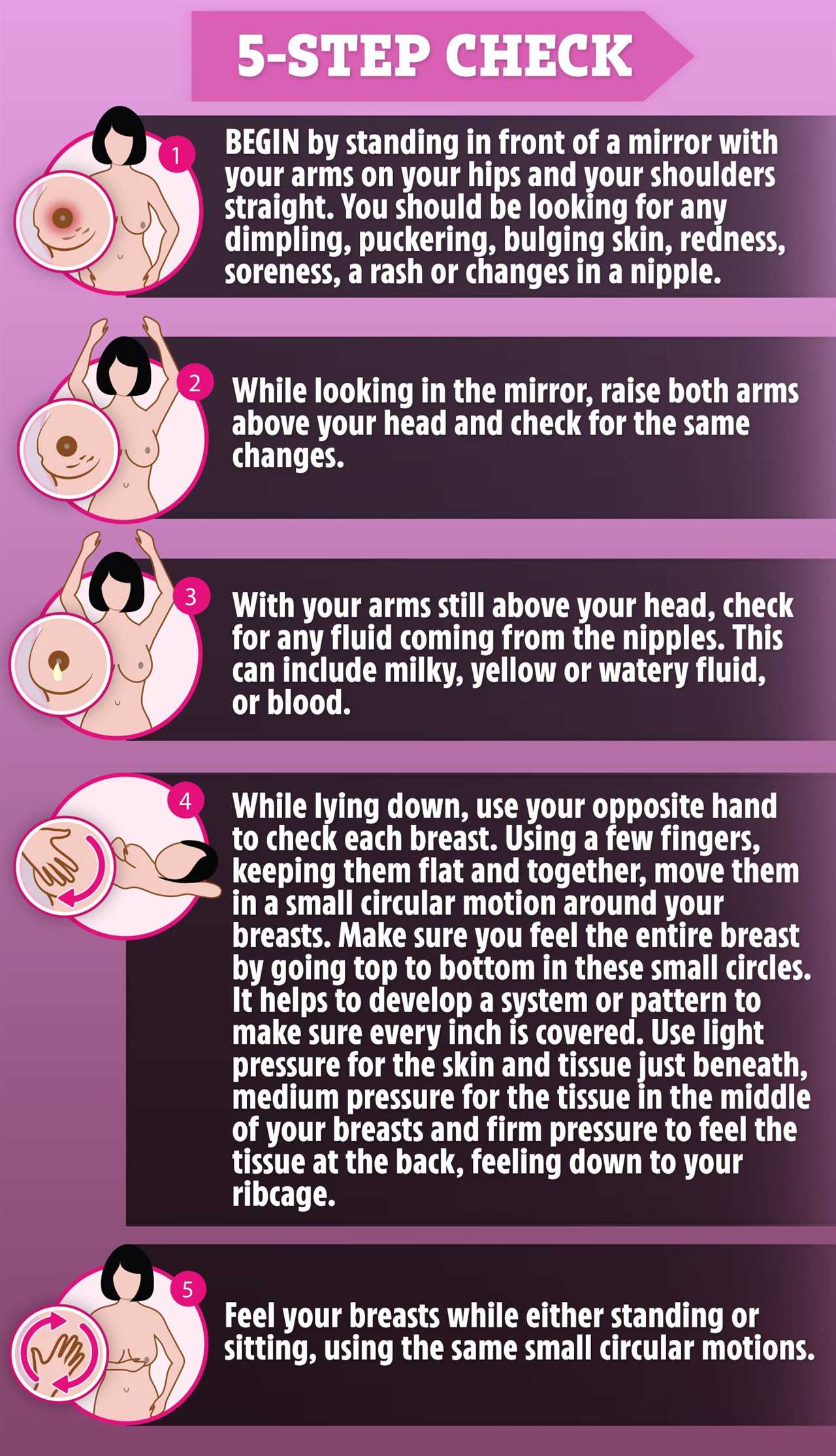MOST of us think of a lump when we imagine breast cancer.
But there are several other key signs you may not be aware of, such as discharge from the nipple.

TV presenter Sarah Beeny has been diagnosed with breast cancer

Over 11,500 people die of breast cancer in the UK every year and diagnosis is key when it comes to catching it early on.
Sarah Beeny, British TV presenter, has today revealed that she has been diagnosed with breast cancer, after finding a lump.
The 50-year-old property expert, known for such programmes as Help! My House Is Falling Down, said she had a “little bit of a breakdown” when she recieved the news because she had been expecting it, after her mum died of the disease when she was ten years old.
If there is a family history of cancer, there may be a faulty gene in the family that raises the risk of other relatives getting the disease.
Mum-of-four Sarah told The Telegraph: “The nurse was so sweet and they were really nice to me but I thought, ‘You don’t understand. I have waited 40 years to hear those words.’ I knew I was going to hear it one day.”
Sarah has begun chemotherapy for her cancer and doctors say she has an 80 per cent chance of a cure.
Breast cancer is one of the most common type of cancer in the UK and often affects women over 50 although anyone can develop it – even men.
Around one in eight women are diagnosed with breast cancer, although recovery chances are high if detected early.
What are the signs and symptoms?
According to Breast Cancer Now, the signs of breast cancer include:
- A lump or swelling in the breast, upper chest or armpit
- A change to the skin, such as puckering or dimpling
- A change in the colour of the breast – the breast may look red or inflamed
- A nipple change, for example it has become pulled in (inverted)
- Rash or crusting around the nipple
- Unusual liquid (discharge) from either nipple
- Changes in size or shape of the breast
- Pain in the breast or armpit – although this alone is not usually a sign of breast cancer, look out for persistent pain that’s there all the time
You should see a doctor if you notice any change to the breast.
Even though it probably is not cancer, catching it early will improve the odds of survival.
Secondary breast cancer is when cancer cells spread from the breast to other parts of the body. At this point, it is no longer curable.
The signs of this are:
- Feeling sick most of the time
- Severe or ongoing headaches
- A dry cough or feeling of breathlessness
- Any lumps or swellings under the arm, breastbone or collarbone
- Discomfort or swelling under the ribs or across the upper abdomen
- Loss of balance of any weakness or numbness of the limbs
- Pain in the bones which may worsen at night
- Feeling more tired than usual
- Altered vision or speech
- Unexpected weight loss, loss of appetite
What age should you go for breast cancer screening?
Around two million women are screened for breast cancer each year.
The NHS Breast Screening Programme is currently for women aged between 50 and 70, and involves screening every three years.
In some parts of England, this has been opened to women aged 47 to 73 years old as part of a trial.
Women are called to a mammogram, which is an image of the breasts obtained by mammography.
Mammography is used for the early detection of breast cancer and involves an X-ray of the breasts.
October is Breast Cancer Awareness Month (BCAM) an annual, worldwide campaign.
There are events held across the UK and the world to “highlight the importance of breast awareness, education and research.”
People also wear pink, and the hashtag #wearitpink is used throughout October, and people can also wear a ribbon in support. You can find out more information and ways to get involved by visiting the Wear It Pink website.
How to check for breast cancer?
There is a five-step self exam you can do at home to check for any changes.
- Step one: Begin by looking in a mirror, facing it with your arms on your hips and your shoulders straight. You should be looking for any dimpling, puckering, bulging skin, redness, soreness, a rash or changes in the nipple.
- Step two: Still looking in the mirror, raise both arms above your head and check for the same changes.
- Step three: With your arms still above your head, check for any fluid coming from the nipples. This can include milky, yellow or watery fluid, or blood.
- Step four: While lying down use your opposite hand to check each breast. Using a few fingers, keeping them flat and together, go in a small circular motion around your breasts. Make sure you feel the entire breast by going top to bottom in these small circles. It helps to develop a system or pattern to make sure every inch is covered. Use light pressure for the skin and tissue just beneath, medium pressure for the tissue in the middle of your breasts, and firm pressure to feel the tissue at the back, feeling down to your ribcage.
- Step five: Feel your breasts while either standing or sitting, using the same small circular motions.







